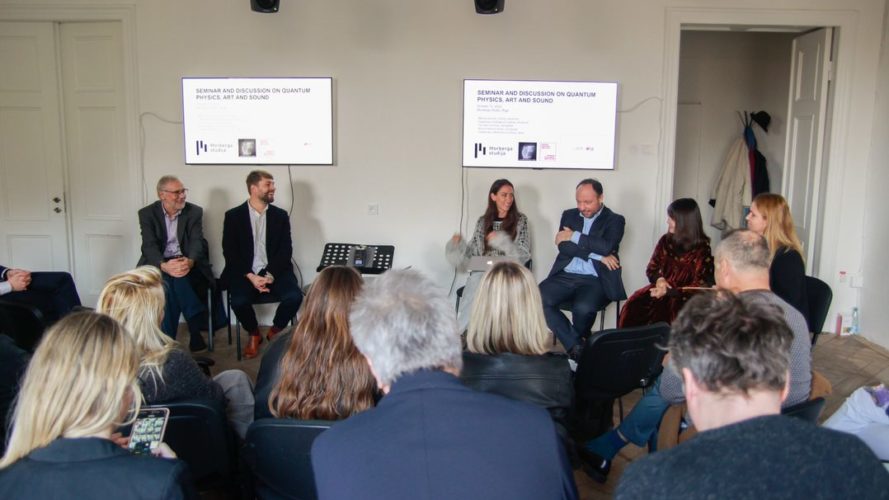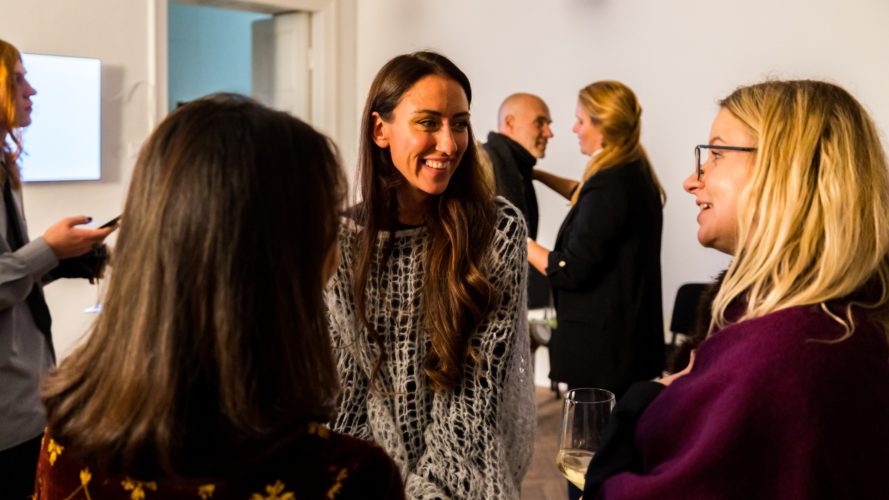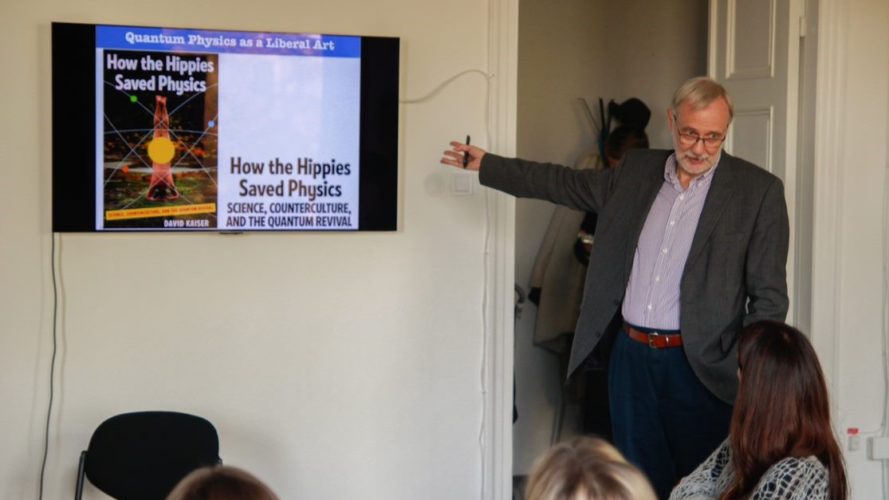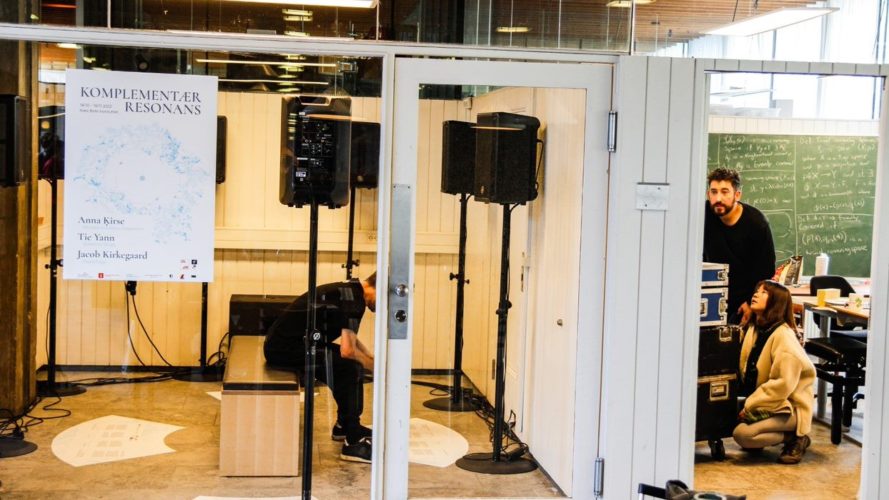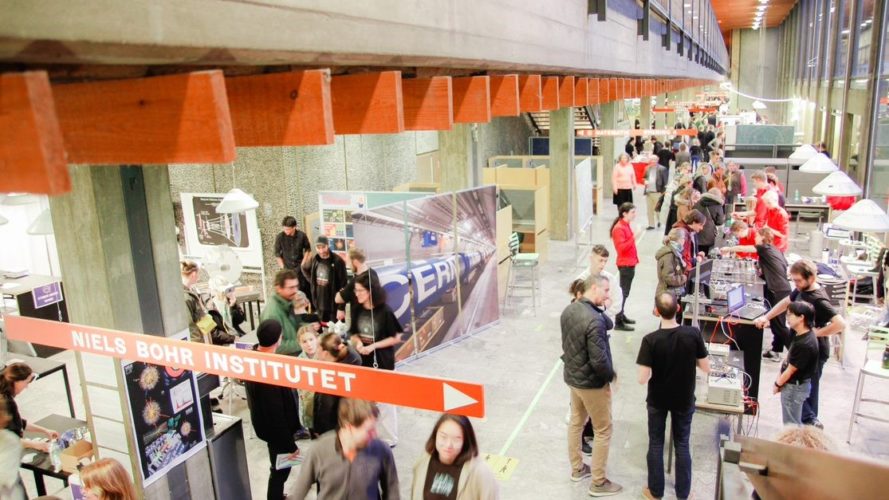Where art & science meet: creative invention and creating new ways of thinking
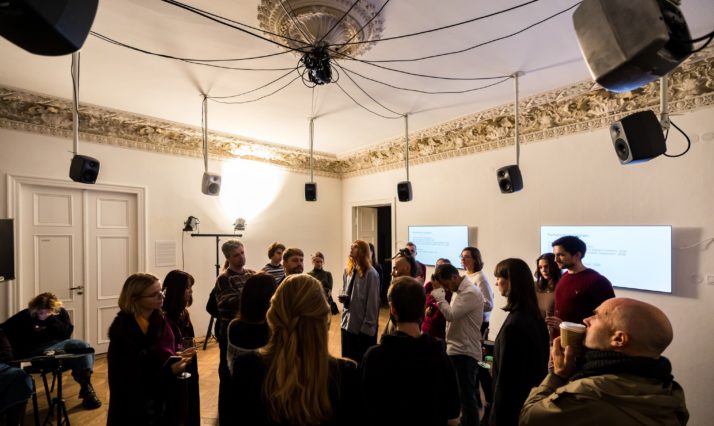
Where art & science meet: creative invention and creating new ways of thinking
100 years ago, the Danish scientist Niels Bohr received the Nobel prize for his revolutionary discoveries in quantum physics. His way of thinking still influences diverse spheres of our society today. Within the framework of our project “Quantum Aesthetic” three sound artworks have been created by the three artists – Jacob Kirkegaard from Denmark, Tie Yann from China, and Anna Fišere from Latvia, who work with sound as their primary medium. The works are incredible examples of how scientific concepts and theory can inspire art and lead to new ways of thinking about the world. The art pieces show us that art and science may not be as dissimilar as we may think.
Art and science have always influenced each other in what we can call a feedback loop, where both fields inform each other and makes way for new and creative inventions. A classic example of this is the genre of science fiction which has created visions and depictions of technology that later has been realized such as the mobile phone and artificial intelligence, but this intersection is often forgotten in broader society where art and science may even be seen as contrasts.
Luckily Niels Bohr was a pioneer when it comes to abstract thinking. Bohr believed that great scientific discoveries needed a cultural and aesthetic dimension to be communicated to the civil society and thereby accentuated the important role of culture in a democratic society. According to Bohr the two fields were not contradictory but complementary.
He played a central role in the establishment of the cultural institute founded under the name of “The Danish Society” in 1939. “The Danish Society” main goal was to put emphasis on cultural exchange and dialogue through international cooperation and partnership. The sound art exhibitions are then not only inspired by Niels Bohr’s thoughts on quantum physics but also reflect his vision regarding cultural exchange and inspiration – the idea that great art and ideas come to life through cultural interaction.
Our two sound art exhibitions in Riga and Copenhagen align with Bohr’s thinking. At the opening of “Complementary contradictions” in Riga in the autumn 2022 there were talks and performances from the artists Tie Yann (CH) and Anna Kirse (LV) and from physicists Mārcis Auziņš and Vjačeslavs Kaščejevs. The exhibition showed how we, by bringing the fields of art and science together, can create a space for dialogue on complicated subjects such as quantum science and engage the publics curiosity on this topic.
The opening in Riga reflects the process of creating the sound art pieces for the exhibition where the artist has been collaborating with physicist Oliver August Dall’Alba Sandberg from the Niels Bohr Institute in Copenhagen. The sound artists have been exploring the world of quantum physics and have each been inspired by specific theories and scientific principles of quantum mechanics. During the creation process the artist also visited the Niels Bohr Institute to further explore the world of quantum physics, and to see the exhibition space.
The exhibition “Complementary Resonance” also opened in the autumn of 2022 at the H.C. Ørsted Institute in Copenhagen during the annual culture night. The exhibition opening could be experienced as part of the official program, which included everything from lectures on black holes to chemistry shows. The exhibitions finished in November 2022 with a grand closing event in Riga in which Jacob Kirkegaard (DK) did a talk and did a mesmerizing sound art performance.
Both exhibitions accentuated the intersection of art and science in practice and engaged its audience in this interplay through performances, lectures, and concerts at the opening and closing events. You can read more about each artwork and the theories that inspired them at the bottom of the article.
The artworks will carry on igniting new sparks in the minds of their audience in the spring of 2023 where the art pieces will travel to China to be a part of an exhibition at the Danish Culture Center in Beijing. The exhibition in Beijing reflects Niels Bohr’s inspiration from the Chinese philosophical line of thought known as Taoism. Tao is conceived as the unconditional and unknowable source and guiding principle of all reality. Bohr recognized a resemblance between Taoism and quantum science in that both seeks to harmonize opposites.
The Chinese artist Tie Yann’s artwork Quantum Drops (2022) is among other things inspired by the resemblance between quantum science and Taoism.
Tie Yann says: “In Quantum, we are exploring our existence, we are all connected” and like Tao she continues “the quantum world cannot be seen but it exists, infinitely deep; the source of all things”.
The artworks can be regarded as small flashes or momentarily grips on this invisible reality that exist but cannot be seen. What we hope to create with these exhibitions is exactly that; to create connections to otherwise incomprehensible parts of our existence and creating new communities across fields of study, boarders and professions.
The collaborations between the branches of the Danish Cultural Institute, the artists and the scientist are a continuation of Bohr’s thinking, and we hope that the upcoming exhibition in Beijing will sow small seeds of creative thinking in the audience.
It has for now been an amazing journey into the cross sections of art and science and we look forward to continuing the work!
Header photo: Andra Masta Babre
Photos from exhibition in CPH: DCI Baltics
Photos from exhibition in Riga: Andra Masta Babre
________________________________________________________________________________
About the works
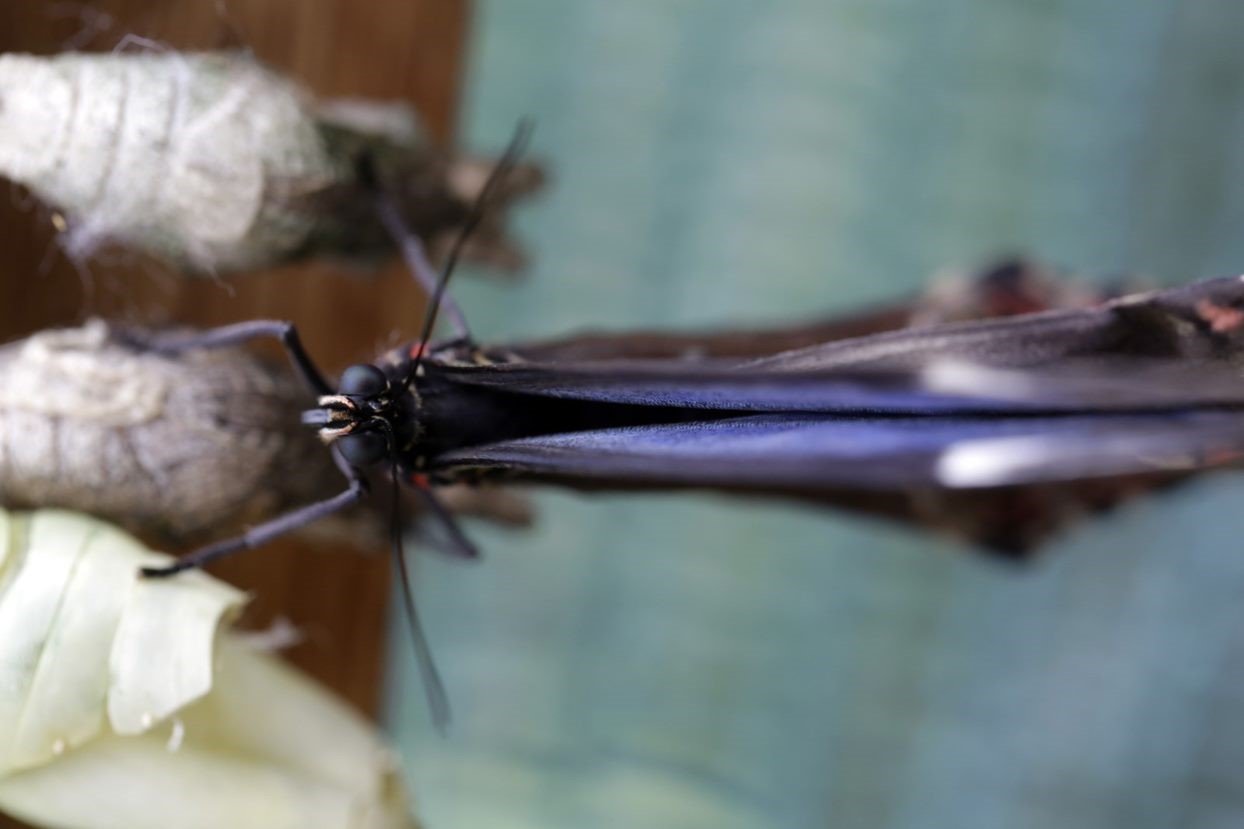
Jakob Kirkegaard Chaos Edge (2022)
Chaos Edge is a sound piece using two different recordings of butterflies. The first part of the work presents the stable but increasing tremble recorded from the tip of two wings on a butterfly poised for flight. The second, the unpredictable movement of the wings of a tethered butterfly in full flight mode.
Using these sounds from the butterfly, Chaos Edge seeks to sonify the “butterfly effect”: both the classic poetic metaphor that illustrates chaos theory, in which a small change in a system has a large influence in shaping its evolution, and the more recent quantum mechanical analogue where the butterfly effect is thwarted by preparing a particle in a specific quantum state which is taken back in time and modified without changing its nature in the present.
Photo by Jacob Kirkegaard
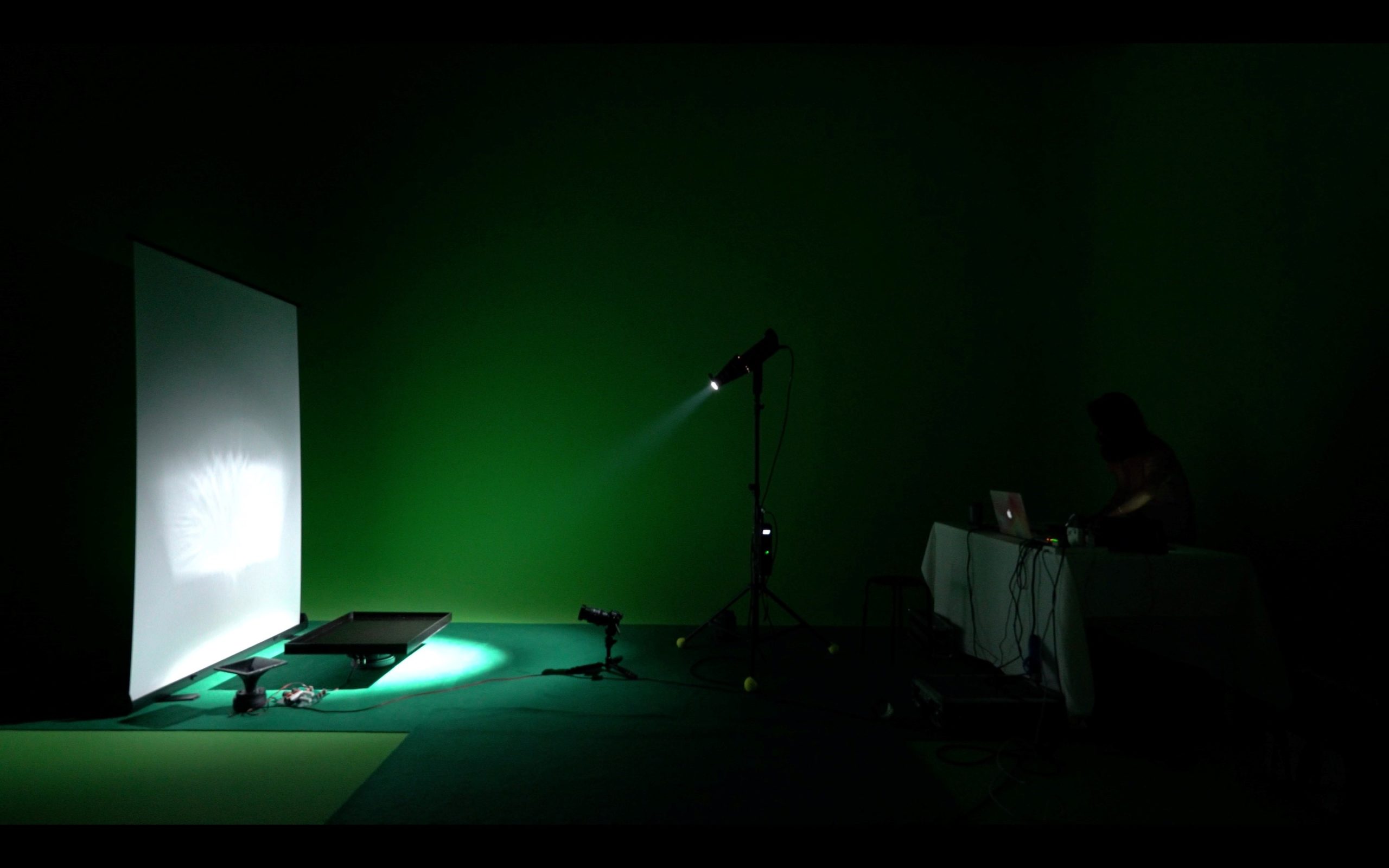
Tie Yann Quantum Drops (2022)
Using the very basic sound of pure frequency, Quantum Drops is re-creating the connections between sound frequencies, water and light in order to take the listener into deep space and find poetics that it is not possible to hear in the buzz of daily life.
As the only way to grasp the ideas behind quantum science is by experiencing and observing their effects, Quantum Drops is recreating the so-called double slit experiment and discovering the connection between quantum science and Taoism. Like Tao, the quantum world also “cannot be seen, but it exists. Infinitely deep, it is the source of all things.” In quantum, we are exploring our existence, we are all atoms, we are all connected, and Quantum Drops reflects on how dualities and contradictions tie the world together
Photograph of Tie Yann creating her piece.
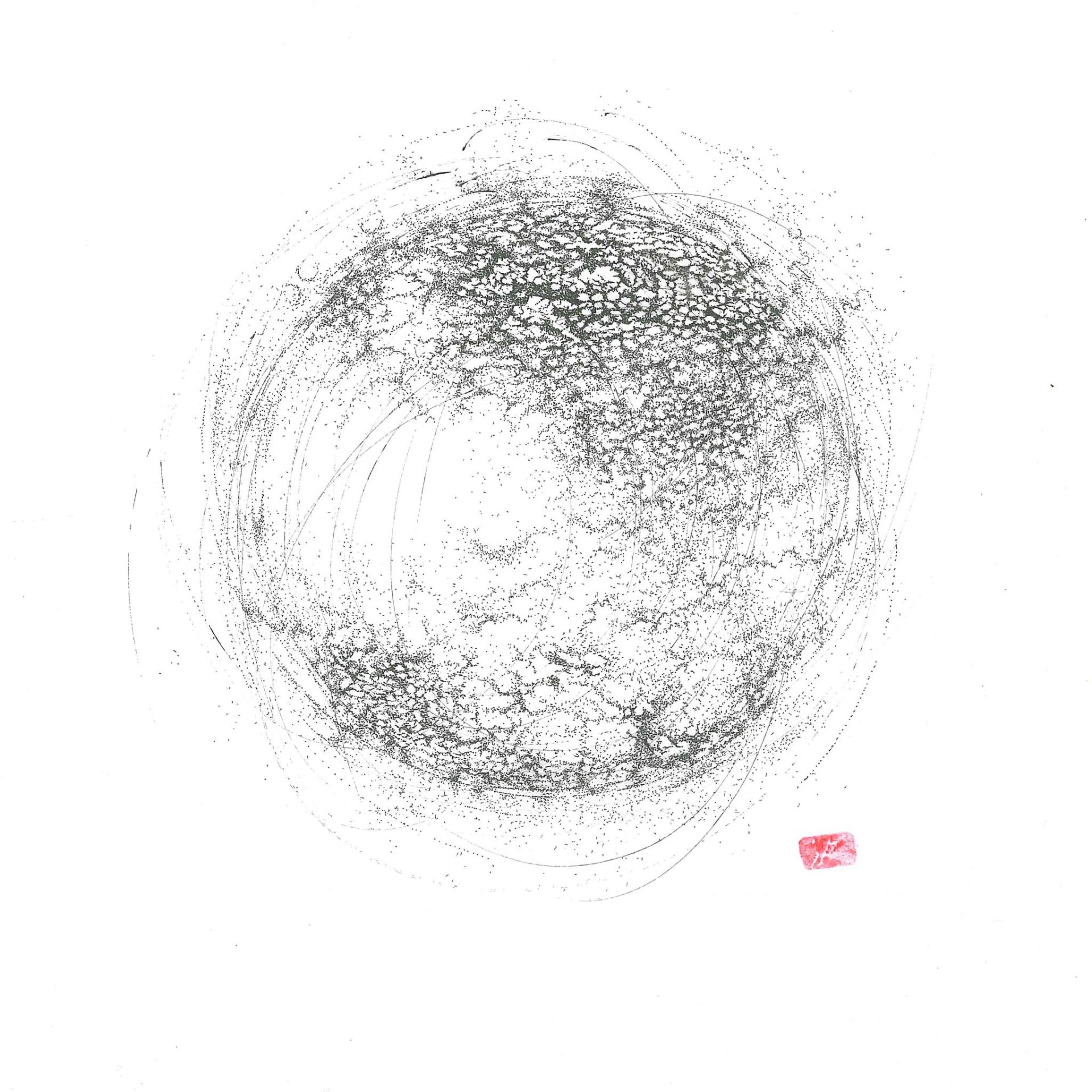
Anna Fišere Mundus Invisibilis: Clean Room (2022)
Mundus Invisibilis: Cleanroom is an exploration of the great nuances of sound by string instruments in combination with electronic and synthesized sounds. The piece is inspired by a very specific quantum experiment based on the Pauli exclusion principle where a cloud of lithium atoms is supercooled and ultra-squeezed and becomes practically invisible to scientists.
Mundus Invisibilis: Cleanroom is an electro-acoustic string quartet piece that is filled with tiny details and nuances – precisely like the quantum world itself. The filigree strings are enhanced with a synthesized soundscape consisting of bubbles – as perfect, fragile and ungraspable as atoms. No doubt this world of atoms continues to be a mystery for the great majority, and Mundus Invisibilis: Cleanroom thus offers a glimpse of an unknown universe. “If everything is known, nothing new can be found, nothing incomprehensible.”
Author of illustration: Ilze Paklone
